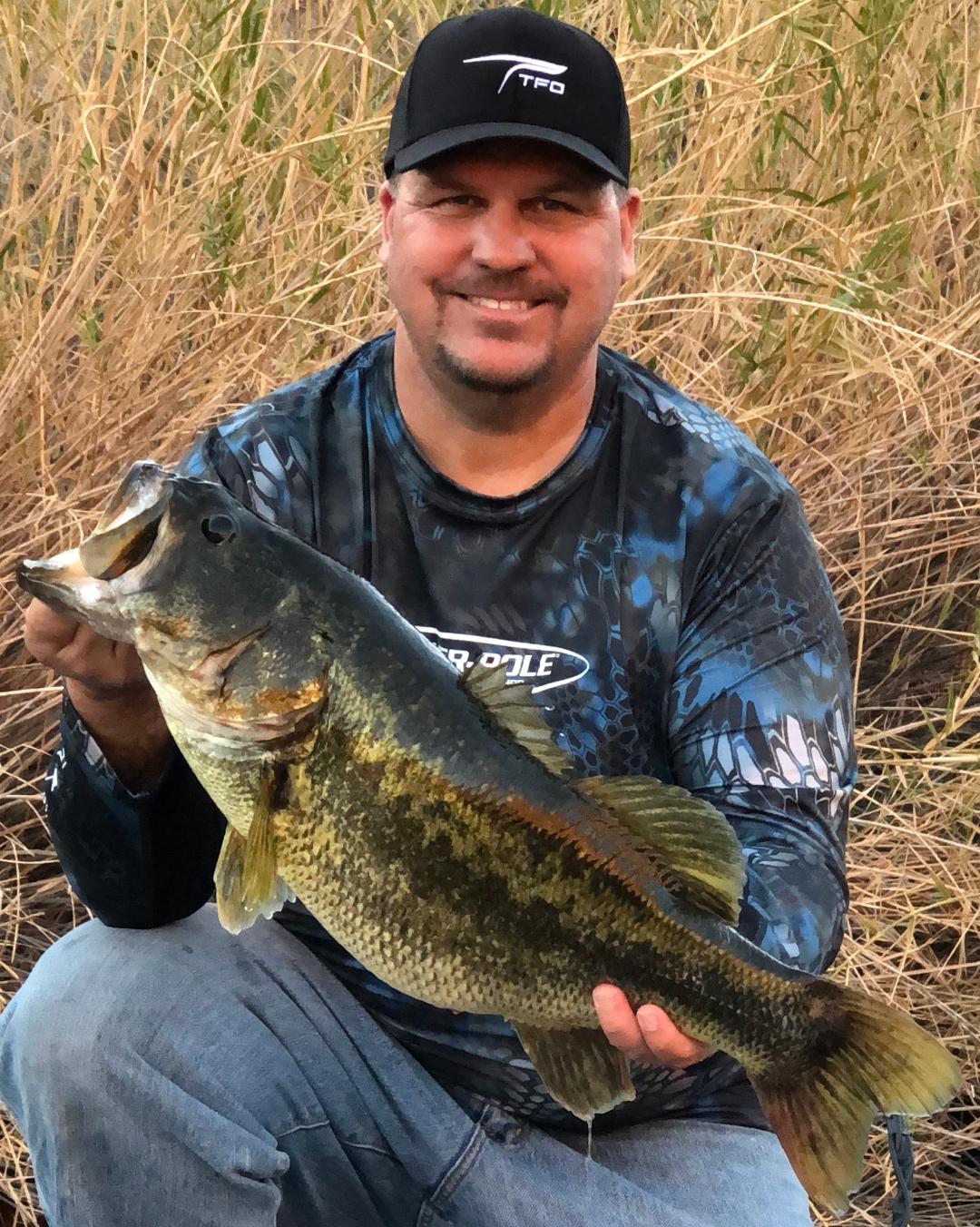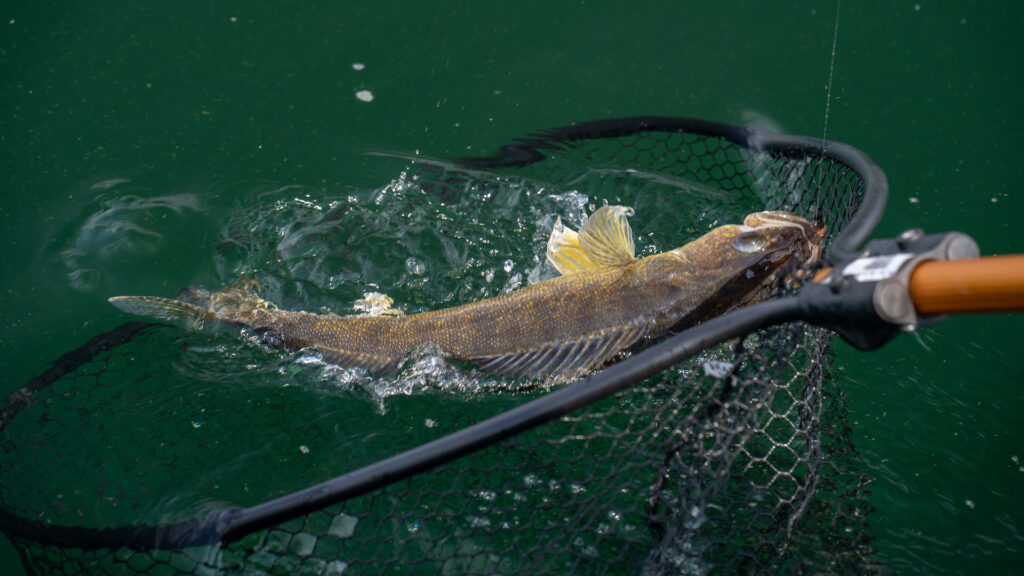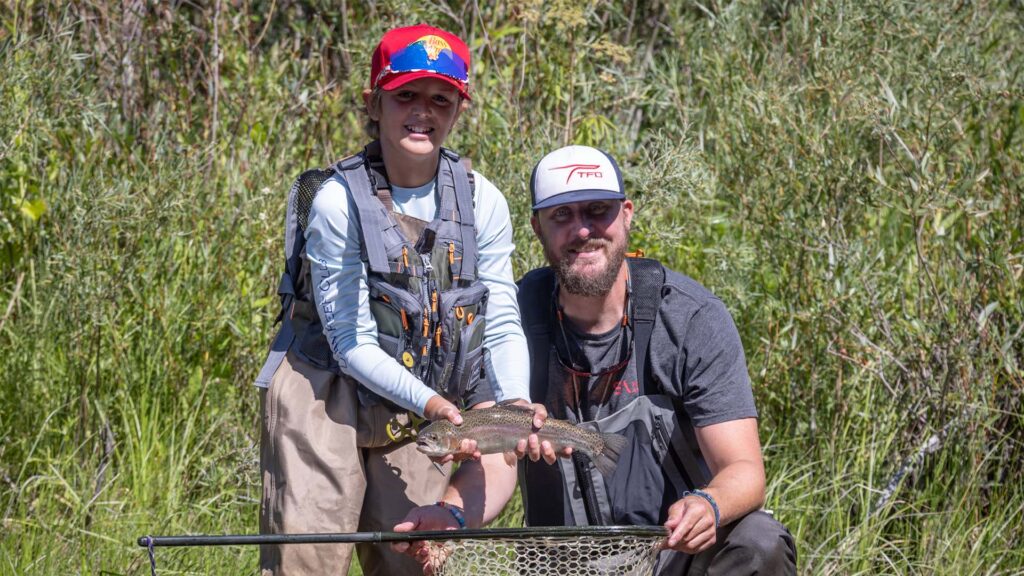Editor’s Note: This post comes from TFO Ambassador Steve Lund, who provides insight on drop shotting for bass.
Drop shotting is a technique that any serious or novice angler shouldn’t overlook. Some will say that they only catch small fish with this technique and rarely catch quality fish. In some cases this may be true; however, there are times when drop shotting seems to outperform other baits in catching not only quantity but quality bass as well. I personally would rather catch fish other ways and often will only resort to drop shotting when other techniques aren’t getting the job done, but I’ll never rule it out. In fact this is one bait that I almost always have tied on and ready to go. I used to be one of the guys that would snub his nose at the thought of drop shotting or as some refer to using the “fairy wand.” After moving to back to Arizona, an area with many clear-water canyon lakes, I quickly learned that drop shotting can be a valuable technique in helping to not only fill out a limit, but also win tournaments. There are certain lakes that big fish just seem to eat the drop shot really well.
Drop shot is a versatile technique that can be fished in a wide range of water column depths, from right next to the bank to the deepest part of the lake. For those that are unfamiliar or new to drop shotting, there are several videos on the Internet that can help you get started with the basic setup.
The Right Setup
My main drop shot setup that I use 90 percent of the time is a Temple Fork Outfitters Gary’s Tactical Series 6’9″ ML Spinning Rod (GTS DSS693-1), paired with a Shimano Stradic Ci4+ 2500 Spinning Reel, spooled with 10-pound P-LineTCB8 Braid with 8-pound P-Line Tactical Fluorocarbon 10-foot leader. I will use this set up when I’m fishing anywhere from about 1-30 feet, as I am usually throwing a 3/16 or 1/4-ounce weight. When I fish deeper than 30 feet, I will use heavier weights —- 3/8 or 1/2 ounce —- and also upsize my rod to the Temple Fork Outfitters Gary’s Tactical Series 7’3″ M Spinning Rod (GTS – S734-1). Increasing the rod power is necessary when fishing deeper so the rod sensitivity doesn’t feel as sluggish and provides more backbone for setting the hook with the heavier weights and more line out. I will fish the same line set up 10-pound braid to 8-pound fluorocarbon leader. On rare instances I may drop to a 6-pound fluorocarbon leader when the bite is finicky in super clear water.
For hooks, I vary the type of hook I use depending on the lake I’m fishing. If I’m fishing a lake with brush trees or other snags, I will use a Gamakatsu Rebarb hook that I can rig a bait texposed, where if I’m fishing relatively open water I will use an Aaron Martens TGW Drop Shot hook and nose hook or wacky hook the worm. Most of the time I will fish with around a 12″ length line from bait to weight. Sometimes it may be necessary to adjust to a shorter length when the fish are lethargic and sitting on the bottom or a longer length to ensure your bait is above vegetation or when targeting suspended fish that are off the bottom.
What to Fish and How to Fish It
Try different types and sizes of baits; sometimes switching it up can make a big difference. I will usually start with a standard straight tail finesse worm in 4.5 – 6″ which works for most conditions. I have had success with curly tail worms also and sometimes prefer to throw curly tail worms when there is more wind or when the fish are more aggressive, the curly tail worm slows down the fall and provides action on the fall attracting active fish that will travel greater distances to your bait. I also like to try bigger baits like a 6-7″ fat worm or baby brush hog that provides a little more visibility in stained, deep water, or fishing at night.
For action I let the fish tell me how they want it. I vary between twitching, dragging, shaking, or even dead sticking until I can determine what seems to be working best. Dead sticking is so hard for me to do, but sometimes the fish just want it that way.
When it comes to colors, there are so many choices and I like to try all kinds of new colors and different color combinations, but some of my favorite colors that always seem to work are Morning Dawn, Aarons Magic, Oxblood/Red Flake, and Margarita Mutilator.
The main thing I would say to keep in mind is change things up and try different things until you figure out the best drop-shot combination for the conditions. Drop shot is not always the best technique, but there are times when it can be, and it is one of many highly effective tools to keep in your box.
Suggestions, comments about drop shotting for bass? Feel free to comment on one of our social media pages.






